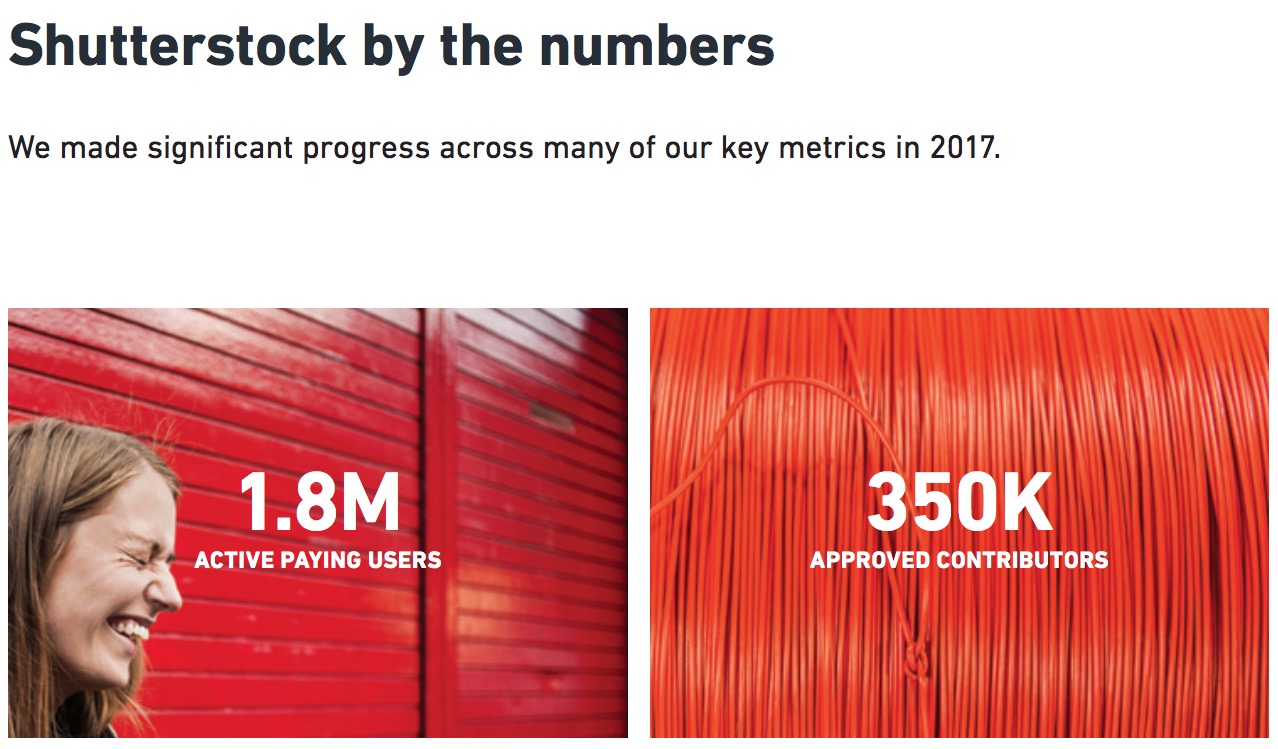If you’re into photography or digital content creation, you’ve probably heard of Shutterstock. It’s one of the biggest stock photo platforms out there, connecting photographers and illustrators with millions of customers worldwide. But beyond just sharing your images, many creators wonder—how much can I actually earn from Shutterstock in 2025? The good news is, with the right photos and a bit of know-how,
Factors Influencing Shutterstock Photo Prices in 2025

When it comes to how much your photos can earn on Shutterstock in 2025, several factors come into play. Let’s break down the main elements that influence photo prices and your earnings:
- License Type: Shutterstock offers two main license types—Standard and Extended. Standard licenses are suitable for most uses like websites and blogs, but if clients want to print large posters or commercial products, Extended licenses are required, which typically pay higher royalties.
- Image Quality and Uniqueness: High-quality, eye-catching, and original photos tend to fetch higher prices. Shutterstock’s algorithms also favor unique images that stand out, increasing your chances of higher earnings.
- Contributor Level and Reputation: As you upload more high-quality images and gain positive reviews, your contributor level may increase. Higher levels often unlock better commission rates and more visibility, boosting your earning potential.
- Market Demand: Trends change, and so does what buyers are searching for. For example, in 2025, themes like remote work, sustainability, and new technologies are popular. Creating images that match trending topics can lead to more downloads and higher earnings.
- Pricing Strategies: Shutterstock has a fixed pricing model, but the way your images are priced within the platform’s structure can influence earnings. Offering exclusive images or targeting niche markets might command higher prices.
- Subscription vs. On-Demand Sales: Shutterstock offers both subscription plans and on-demand downloads. Subscribers tend to pay less per image, but the volume of downloads can compensate. On-demand sales might generate higher royalties per download, affecting your overall earnings.
Understanding these factors helps you make smarter choices about what to upload and how to position your portfolio. Keep an eye on market trends, focus on quality, and engage with the community to optimize your earnings on Shutterstock in 2025!
Average Earnings for Photographers on Shutterstock in 2025

So, you’re curious about how much photographers are actually making on Shutterstock this year? Well, it varies quite a bit depending on several factors like your portfolio size, image quality, and the consistency of your uploads. But to give you a ballpark figure, the average earnings for Shutterstock contributors in 2025 tend to fall somewhere around $0.25 to $0.50 per download.
It might not sound like much at first, but the real magic happens when you start racking up hundreds or even thousands of downloads. For example, if you have a portfolio with 1,000 images and each gets an average of 50 downloads per year, you could be looking at:
| Estimated Downloads per Image | Total Downloads | Average Earnings per Download | Estimated Annual Income |
|---|---|---|---|
| 50 | 50,000 | $0.30 | $15,000 |
| 20 | 20,000 | $0.25 | $5,000 |
Of course, these numbers can fluctuate based on the niche you’re shooting for, the quality of your images, and how well you market your portfolio. Some top contributors earn a significant income, especially if they focus on trending topics or highly sought-after categories like technology, business, or lifestyle images. But for most, earning a few hundred to a few thousand dollars annually is common, especially in the beginning.
It’s also worth noting that Shutterstock’s revenue share can vary. Contributors generally earn around 15-30% of the sale price, depending on your exclusivity status and your total lifetime earnings. So, consistency and quality are your best friends here if you want to maximize your earnings!
How to Maximize Your Photo Sales on Shutterstock
Looking to boost your earnings? It’s all about working smart and understanding what buyers want in 2025. Here are some practical tips to help you maximize your photo sales on Shutterstock:
- Focus on trending topics and niches: Keep an eye on current events, popular industries, and emerging trends. For example, sustainability, remote work, wellness, and AI-related themes are hot right now.
- Enhance your image quality: Use high-resolution cameras and edit your photos to perfection. Clear, well-lit, and professionally composed images tend to sell better.
- Use relevant keywords: Proper tagging helps your images get discovered. Be specific and include keywords that accurately describe your photo’s content, style, and mood.
- Upload consistently: Regular uploads keep your portfolio fresh and increase the chances of getting more downloads. Set a schedule that works for you—whether it’s weekly or biweekly.
- Offer variety: Cover different angles, compositions, and subjects within your niche. This attracts a broader audience and increases your chances of sales.
- Stay updated with Shutterstock trends: Join contributor forums, read industry blogs, and participate in webinars. Knowing what’s trending helps you tailor your content effectively.
Another smart move is to analyze your best-selling images and see what makes them stand out. Is it the subject, composition, or keyword strategy? Learning from your own successes can help you replicate those results.
Finally, remember that patience and persistence are key. Building a solid portfolio takes time, but with quality content, strategic keywording, and regular uploads, you’ll be well on your way to increasing your Shutterstock earnings in 2025!
Tips for Pricing Your Photos Effectively in 2025
Setting the right price for your photos on Shutterstock can feel a bit like walking a tightrope. You want to make sure you’re competitive enough to attract buyers, but also earn a fair profit for your work. So, how do you strike that perfect balance in 2025? Here are some practical tips to help you price your images wisely.
Understand Shutterstock’s Pricing Structure
First things first, familiarize yourself with how Shutterstock’s licensing works. They offer Standard and Enhanced licenses, each with different price points. Typically, images with broader appeal or high-demand themes can command higher prices. Keep an eye on trending topics and popular categories to gauge where your photos might fit.
Research the Competition
Spend some time exploring similar photos on Shutterstock. Look at the pricing tiers for images in your niche. Notice which photos have more downloads and how they’re priced. This can give you a good sense of what buyers are willing to pay and help you price your photos competitively.
Consider Your Image Quality and Uniqueness
High-quality, unique images can often be priced higher because they stand out. If your photo is technically perfect and offers something different from what’s already available, don’t be afraid to set a slightly higher price. On the flip side, if your photo is more generic, you might want to price it more affordably to attract downloads.
Use Tiered Pricing Strategically
Shutterstock’s royalty rates are influenced by the number of downloads. If you’re just starting out, consider setting your prices slightly lower to attract initial buyers. As you build a portfolio and reputation, gradually increase your prices for premium or exclusive images. Remember, a steady stream of downloads can sometimes be more profitable than a few high-priced sales.
Experiment and Track Your Results
Pricing isn’t a set-it-and-forget-it deal. Experiment with different price points and keep an eye on your sales data. Shutterstock provides insights into which images sell best at what prices. Use this data to refine your pricing strategy over time, making adjustments based on what works best.
In essence, effective pricing in 2025 involves research, understanding your audience, and being flexible. Don’t be afraid to test different strategies, and always stay updated on market trends to keep your photos competitively priced.
Conclusion and Final Thoughts on Shutterstock Photo Sales in 2025
As we wrap up our look into Shutterstock photo sales in 2025, it’s clear that the landscape is more dynamic than ever. With the rise of new technologies, changing buyer behaviors, and evolving market demands, staying adaptable is key. Whether you’re a seasoned contributor or just starting out, understanding how to navigate this space can significantly impact your earnings.
Remember, success on Shutterstock isn’t just about uploading a lot of images; it’s about quality, relevance, and strategic positioning. Focus on creating high-quality, original content that appeals to current trends, and don’t shy away from experimenting with your pricing to see what works best. Building a diverse portfolio can also help you tap into different markets and increase your earning potential.
Looking ahead to 2025, keep an eye on emerging trends such as AI-generated images, sustainability themes, and diverse representation. Incorporating these themes can give you an edge and make your portfolio more attractive to buyers seeking fresh, relevant visuals.
Finally, stay engaged with the Shutterstock community and resources. They offer helpful tips, updates, and tools that can help you optimize your sales and earnings. Remember, patience and persistence are key—building a steady income from stock photography takes time, but with the right approach, it can be a rewarding venture.
So, keep creating, keep learning, and embrace the opportunities that 2025 holds for stock photographers. Your next big sale might just be a click away!


